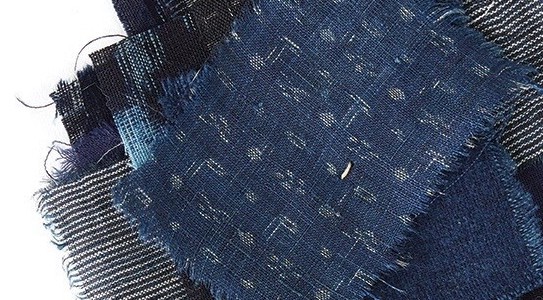Subscriber Exclusive
The Tam O’Shanter
This charming tam o’shanter from the January/February 2017 issue of PieceWork makes a special gift. The body is worked in a Fair Isle pattern, and the tam gets its distinctive shape when it is washed and blocked.
A tam o’shanter is a bonnet made of wool, handknitted in one piece. It is flat, similar to a beret, but with a circumference twice that of the head. The cap is stretched on a wooden disc to create its unique flat shape. At the end of the sixteenth century, bonnet makers made these caps in Scotland. They became fashionable for men and remained so throughout the seventeenth century. The name comes from an old Scottish legend that
was later turned into a poem—“Tam o’Shanter”—by Robert Burns (1759–1796).
A form of the original Scottish tam o’shanter, the tam (or tammy), became a fashionable women’s accessory beginning in the early 1920s. Before chemical dyes were invented in the mid-1850s, the Scottish bonnet was made only in blue, black, and brown colors. Presently, it is available in a wide variety of colors as well as in tartan plaids and Fair Isle–color patterning.
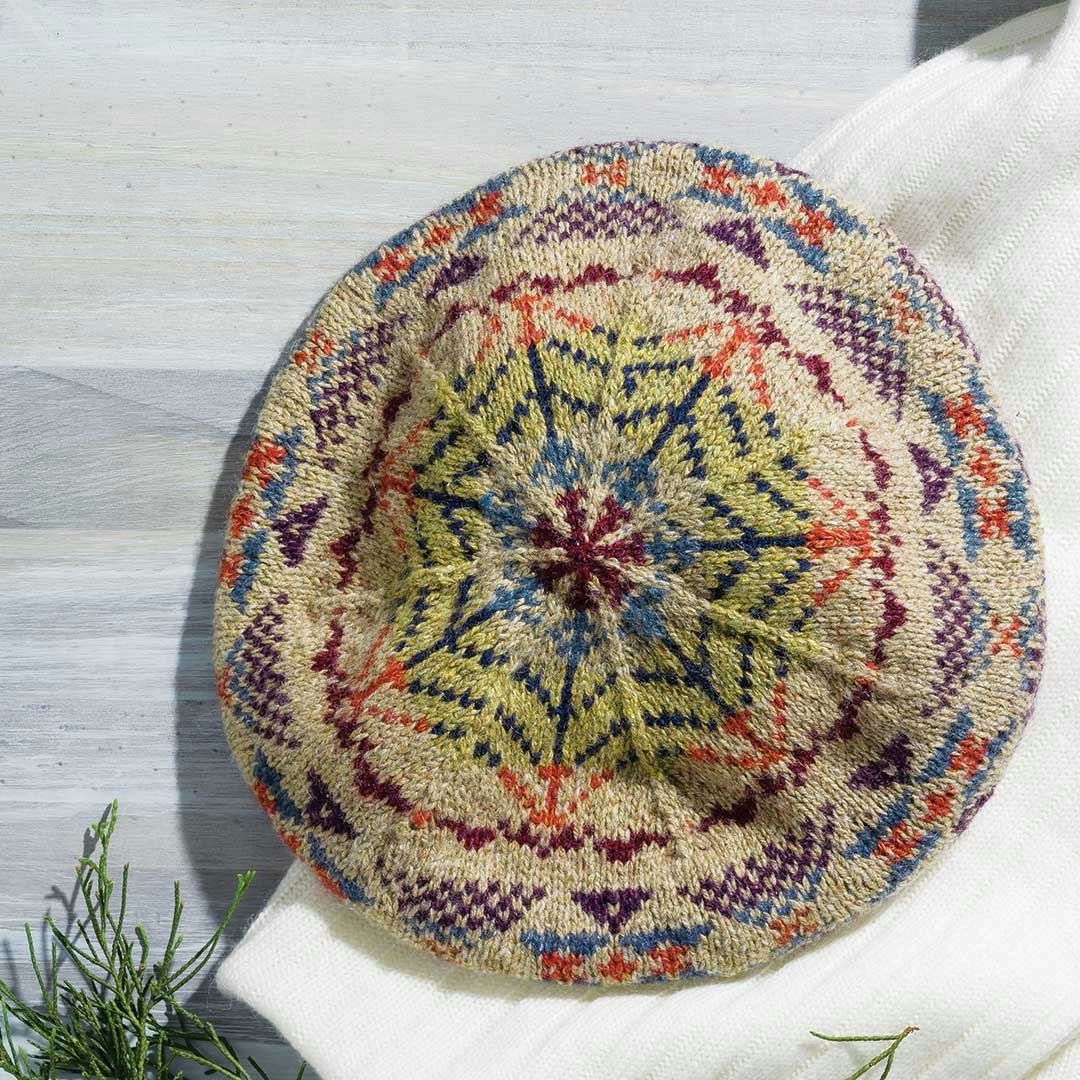
The circular cast-on produces a beautiful cast-on edge; the elasticity from this cast-on helps the tam fit better.
This tam starts at the bottom with a circular cast-on, which produces a beautiful cast-on edge. The tam fits better because of the extra elasticity from this cast-on. A neat 1x1 rib is then worked for about an inch (2 cm). The body is worked next in a Fair Isle pattern, followed by decreases for the top Color Wheel pattern. The completed tam gets its distinctive shape when it is washed and blocked properly.
A tam o’shanter is a bonnet made of wool, handknitted in one piece. It is flat, similar to a beret, but with a circumference twice that of the head. The cap is stretched on a wooden disc to create its unique flat shape. At the end of the sixteenth century, bonnet makers made these caps in Scotland. They became fashionable for men and remained so throughout the seventeenth century. The name comes from an old Scottish legend that
was later turned into a poem—“Tam o’Shanter”—by Robert Burns (1759–1796).
A form of the original Scottish tam o’shanter, the tam (or tammy), became a fashionable women’s accessory beginning in the early 1920s. Before chemical dyes were invented in the mid-1850s, the Scottish bonnet was made only in blue, black, and brown colors. Presently, it is available in a wide variety of colors as well as in tartan plaids and Fair Isle–color patterning.

The circular cast-on produces a beautiful cast-on edge; the elasticity from this cast-on helps the tam fit better.
This tam starts at the bottom with a circular cast-on, which produces a beautiful cast-on edge. The tam fits better because of the extra elasticity from this cast-on. A neat 1x1 rib is then worked for about an inch (2 cm). The body is worked next in a Fair Isle pattern, followed by decreases for the top Color Wheel pattern. The completed tam gets its distinctive shape when it is washed and blocked properly.
[PAYWALL]
All charts are read in the same way. Each stitch is indicated by a square and each round of knitting is indicated by a row of squares; read each chart from right to left and from bottom to top. When the chart narrows by a stitch on each side of the center stitch, make a central double decrease (CDD) as indicated on the chart; as stitches are decreased, they are replaced with a gray “no stitch” on the chart. In this pattern, there are seven double decreases every other round.
Materials
- Shibui Pebble, 48% recycled silk/36% wool/16% cashmere yarn, fingering weight, 224 yards (204.8 m)/25 gram (0.8 oz) skein, 1 skein each of #13 Caffeine (tan, Color 1), #2041 Pollen (yellow, Color 2), #2016 Suit (navy, Color 3), #2017 Velvet (purple, Color 4), #2012 Fjord (teal, Color 5), #2031 Poppy (orange,
Color 6), and #2018 Bordeaux (deep red, Color 7)
- Needles, circular 16 inches (40 cm) sizes 2 (2.75 cm) and 1 (2.25 cm) or size needed to obtain gauge
- Markers
- Tapestry needle
- Elastic thread (optional)
- Scarp yarn
Finished size: 22½ inches (57.1 cm) brim circumference
and 7¾ inches (19.7 cm) long
Gauge: 29 sts and 35 rows = 4 inches (10.2 cm) on size
2 needle in Fair Isle knitting
Special Abbreviations
CDD—(central double decrease) slip 2 stitches together knitwise, knit 1 stitch, pass 2 slipped stitches over; decrease completed.
Visit pieceworkmagazine.com/abbreviations for terms you don’t know.
Instructions
Tam
Tubular Cast-On
With scrap yarn of a contrasting color, CO 73 sts (half the total amount of sts plus 1). Using the smaller needle and Color 2, k 1 row. *K1, insert left-hand needle from front to back under strand between sts and p without twisting; rep from * until you reach the last st, then insert left-hand needle from front to back under strand between sts and p tog with last st —144 sts. Pm and join in the rnd, being careful not to twist sts.
Rnd 1: *K1, sl 1 pwise wyf; rep from *.
Rnd 2: *Sl 1 pwise wyb, p1; rep from *.
Rep Rnds 1 and 2 two times.
Rib
Work 1x1 rib (k1, p1) until rib measures 1 inch (2.5 cm). Remove the scrap yarn. Change to Color 1 and larger needles.
Body
Inc Rnd: *[K3, kf&b] 3 times, k2, kf&b; rep from * 8 more times, [k3, kf&b] 2 more times, k1—182 sts.
K 3 rnds even.
Work Chart 1.
K 3 rnds even with Color 1.
Work Chart 2.
Note: For the Wheel-pattern decreases, there are seven decrease points where the central double decrease (CDD) is used. This technique combines three stitches into one, leaving a raised knit stitch.
Cont dec every other rnd while working from Chart 3 until 14 sts rem, then work [k1, CDD] 3 times, k2tog—7 sts rem. Break yarn, leaving a 6-inch (15.2-cm) tail and draw through the rem sts. Pull yarn through the center to inside and weave in all ends.
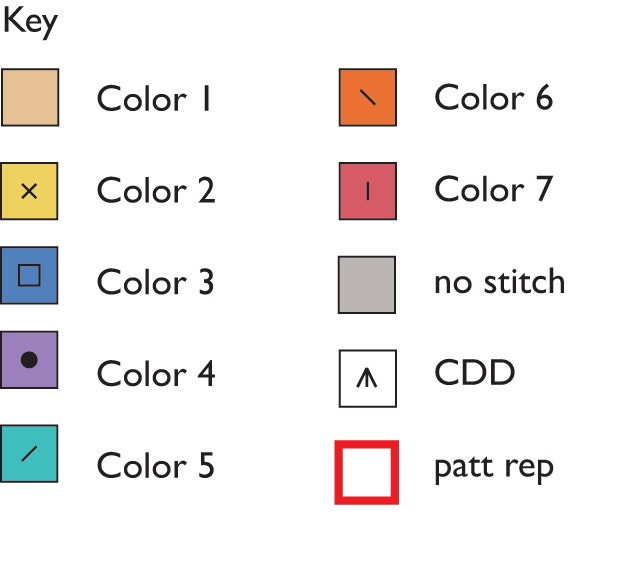
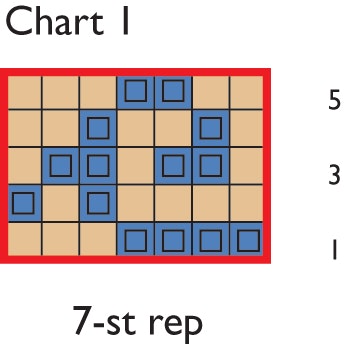
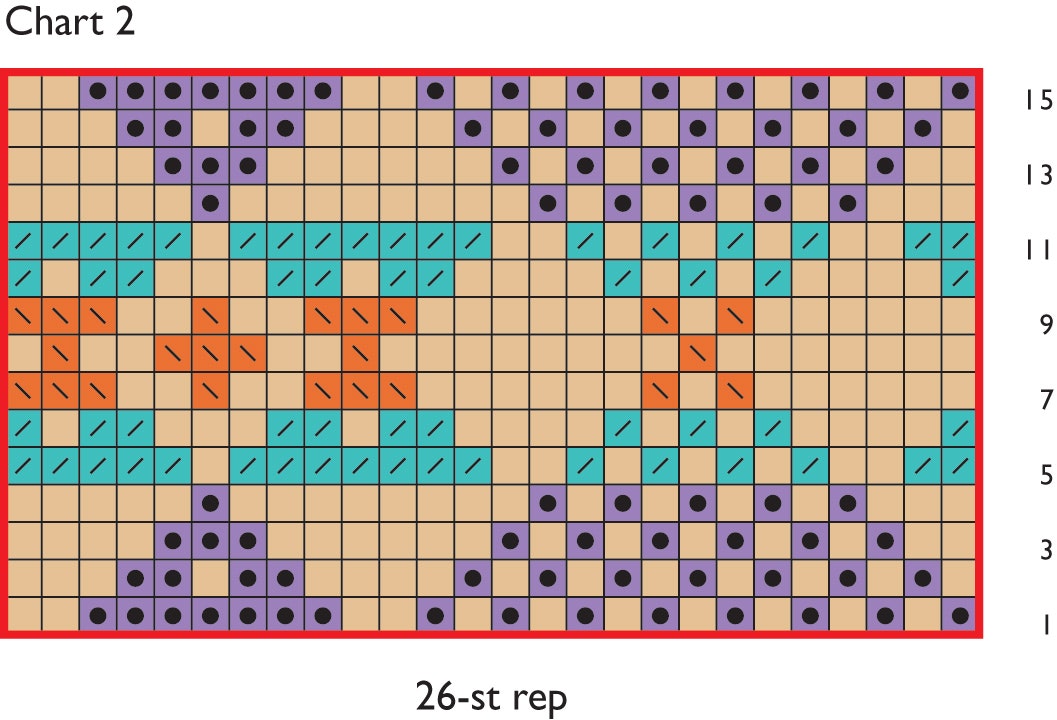
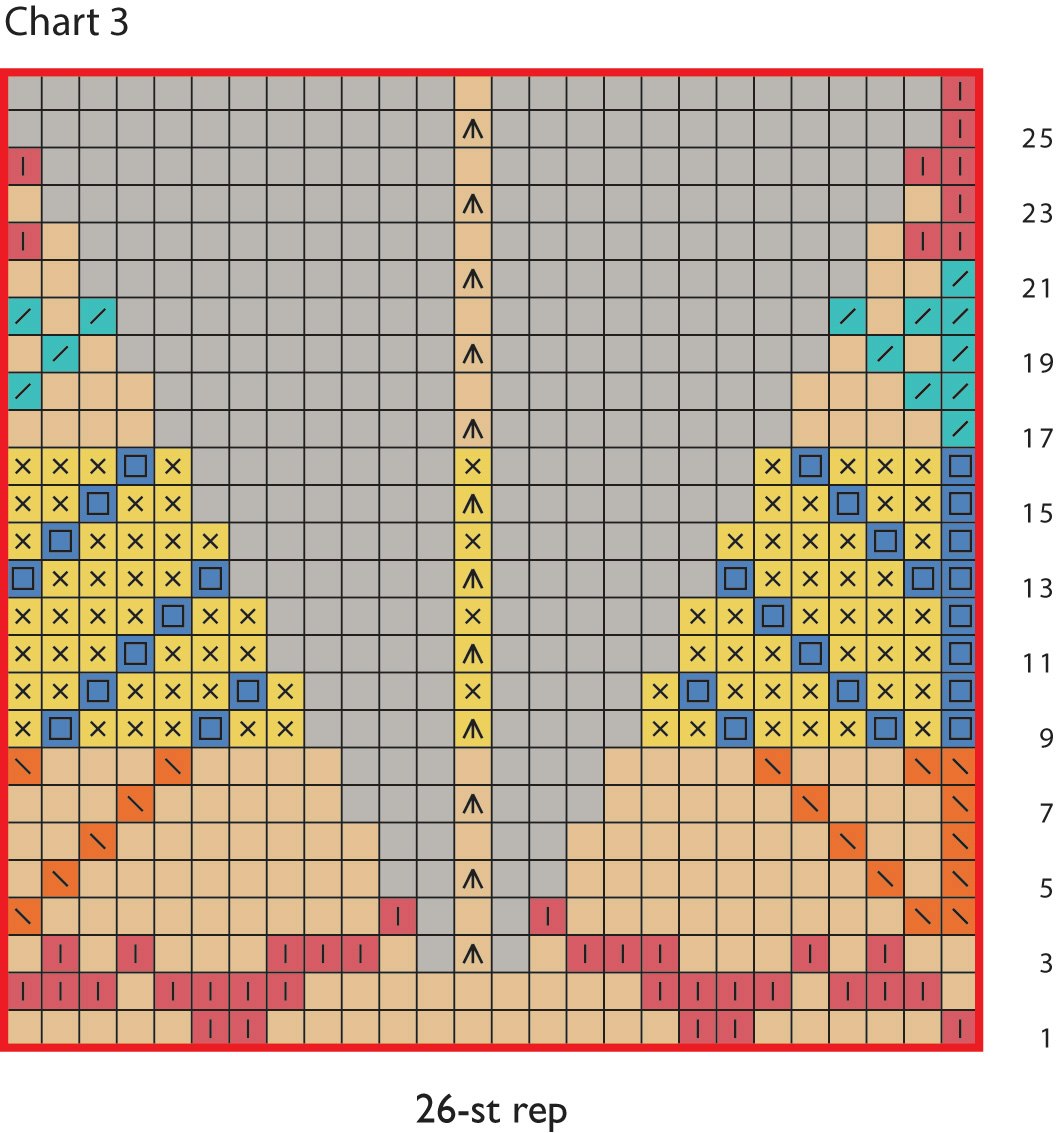
Finishing
Run a gathering thread end through the cast-on edge. Handwash the tam in lukewarm water with a little bit of dish soap or shampoo. Rinse. Pat dry in a towel; do not wring. Place tam over a large plate and pull thread around cast-on edge. Do not leave near heat or sunlight. When the tam is completely dry, remove from the plate and discard thread. If desired, elastic cord can be inserted into the bottom of the ribbing to help hold its shape.
Eileen Lee has a textile background working with Levi Strauss & Co. for eighteen years where she was responsible for product development, design, and merchandising. For eleven years, she worked at MeadowFarm Yarn Studio in Nevada City, California, managing the shop, teaching, and designing. Currently, she has a studio near her home and continues to teach the arts of knitting, weaving, spinning, and dyeing. Her designs have appeared in several publications, including PieceWork, The Unofficial Downton Abbey Knits, Spin & Knit 2017, and Knitting Traditions. She lives in Grass Valley, California, with her husband, Bill, son, Eric, and dachshund, Lizy Marie.
This project is available in the January/February 2017 issue of PieceWork.
Updated November 18, 2020.



